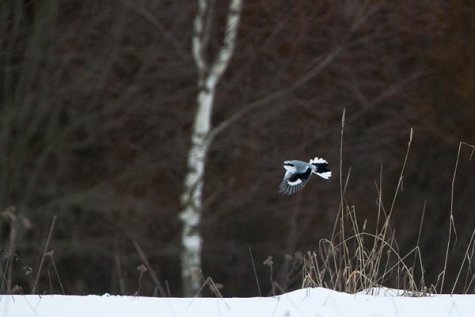January in the world of shrikes
It isn’t very easy to hit mice in the thick snow, and the grey shrikes now clearly aim at catching passerines. There are 40 observations of the “tit hawks” prowling around or attacking the small birds who visit bird feeders: 46,5% of all reports.
In addition there are some observations of grey shrikes attacking passerines in reed banks. Observers have seen six cases where the grey shrike has hit its prey successfully – in five of those the prey has been a passerine (for instance great tit and willow tit; unspecified sparrow), and only once the shrike caught a mouse.
We look forward to your continued reports from grey shrike encounters. The best way to send them is to use the simple observation form that can be completed on the www.eoy.ee/ogijad web page. And those who can find some spare time should certainly join the winter mapping of grey shrikes. Active participation would provide us with important data about the winter population density of grey shrikes (some daytime birds of prey as well).
Mapping the grey shrikes will be a pleasant way to add extra interest to a wintertime bird observation expedition!









